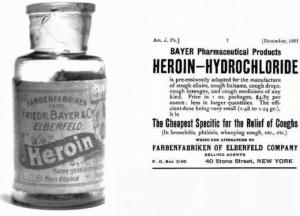THE MYTHICAL ROOTS OF U.S. DRUG POLICY: SOLDIER'S DISEASE AND ADDICTION IN THE CIVIL WAR

Overview
Originally Published: 07/01/2011
Post Date: 07/01/2011
by Jerry Mandel, PhD
Attachment Files
Summary/Abstract
Soldier's Disease -- widespread addiction following massive administration of opiates during the Civil War -- is the earliest and most often repeated example of a drug problem before the narcotics laws.
Content
Abstract Soldier's Disease -- widespread addiction following massive administration of opiates during the Civil War -- is the earliest and most often repeated example of a drug problem before the narcotics laws. The story exemplifies several basic themes used in support of continued drug prohibition -- addiction is easy to acquire, hard to kick, and is a publicly noticed, i.e. asocial, problem. Soldier's Disease, though, is a myth. Not one case of addiction was reported in medical records or the literature of the time; under ten references were made in the Nineteenth Century to addiction the cause of which was the Civil War; and no pejorative nickname for addicted veterans, like Soldier's Disease, appeared in the literature until 1 9 15, and it did not become part of the Conventional Wisdom of drug experts until almost a century after Appomattox. THE MYTHICAL ROOTS OF U.S. DRUG POLICY: SOLDIER'S DISEASE AND ADDICTS IN THE CIVIL WAR myth ... 1: a usu. traditional story of ostensibly historical events that serves to unfold part of the world view of a people or explain a practice, belief, or natural phenomena ... 3 ... b: an ill-founded belief held uncritically esp. by an interested group. Webster's New Collegiate Dictionary, 1973 The earliest (and often the only) example of opiate addiction as a social problem which is frequently cited by drug experts is Soldier's Disease -- widespread addiction resulting from widespread opiate use in the Civil War. Most writers who report Soldier's Disease devote no more than three sentences to it. It is the brevity, clarity, "catchiness," and conceptual implication of "Soldier's Disease" which accounts for the contemporary significance of such a fleeting reference. Possibly the lengthiest and most graphic description of opiate use in the Civil War, resulting in massive addiction among veterans, was provided by Gerald Starkey, a century after that war: In 1862 (sic) the Civil War broke out.... They would charge each other, literally pound chains down cannons and fire point blank at the enemy and these young men were presented to their field surgeons with terrible shrapnel wounds ... along with terrible pain. About all the field surgeon could do was use the two new invented tools that had been presented to him in the previous five or six years I the hypodermic needle and syringe, along with Morphine Sulfate .... They injected the young wounded veterans with huge amounts of Morphine daily (every four hours) to kill their pain.... It was necessary for the surgeons to do full-quarter amputations -- literally take the arms and legs off right at the start of the body, usually to stop infectious gangrene. In 1865 there were an estimated 400,000 young War veterans addicted to Morphine.... The returning veteran could be. . identified because he had a leather thong around his neck and a leather bag (with) Morphine Sulfate tablets, along with a syringe and a needle issued to the soldier on his discharge.... (T)his was called the "Soldier's Disease." To View Entire Document See Attached PDF File





